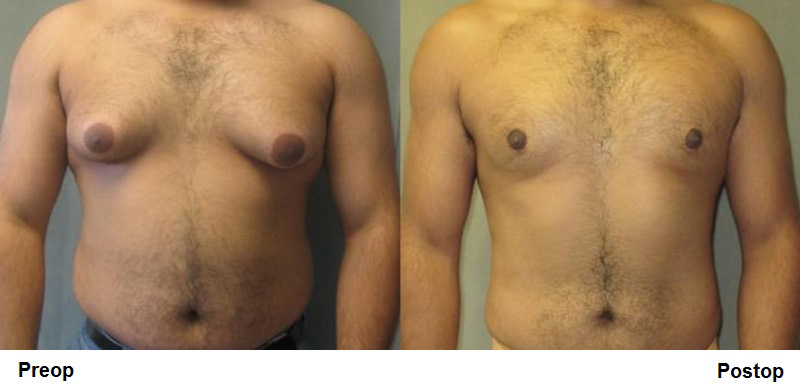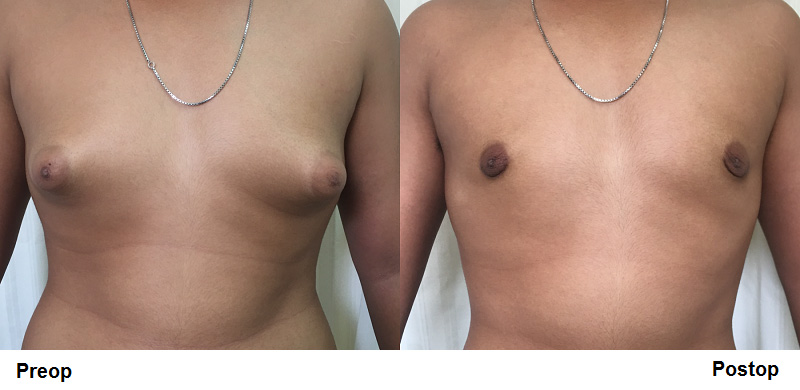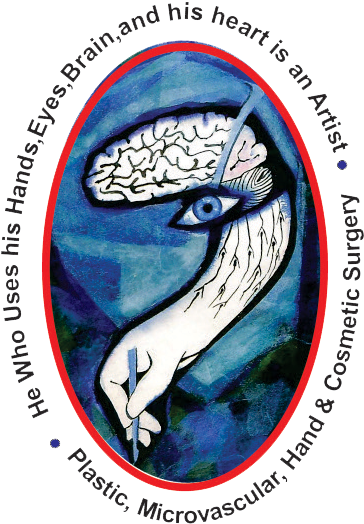Gynaecomastia
Ear lobe repair can correct torn, ripped, drooping and stretched-out earlobes. This is not to be confused with ear surgery (otoplasty), which is typically performed to correct large, protruding or deformed ears.

Gynaecomastia surgery is often performed to remove the excess tissue that is causing gynaecomastia.
Liposuction and breast reduction surgery can be performed at the same time if you have an excess of both fatty and glandular tissue.
There are two options depending on the type of excess tissue you have:
- Liposuction – is performed if you have excess breast fat. Liposuction for treating gynecomastia is typically performed using local or general anaesthetic. It involves a small incision on each side of your chest, the edge of your areola or within your armpit. Through these incisions your cosmetic surgeon will insert a thin tube to loosen the excess fat and remove it using a high-power vacuum and sculpt a new more natural chest contour.
- Male breast reduction – is performed if you have excess breast gland tissue. Male breast reduction surgery is usually carried out under general anaesthetic. It involves making a cut around your nipple that allows your surgeon to remove the tissue. Cuts may be extended and your nipples repositioned if you have a lot of tissue to remove. The procedure will typically take 90 minutes. Your cosmetic surgeon will take care to place incisions so that the resulting scars are as inconspicuous as possible.
Questions? We got Answers!
Normally developing pubertal males may be at risk for gynecomastia that is part of the normal developmental process. Normal male infants also may have gynecomastia.
Other risk factors include:
- Aging, since aging may promote decreases in testosterone production that can cause the problem.
- The risks for developing enlarged male breasts related to specific diseases and conditions (such as cirrhosis of the liver) are the same risk factors that predispose to those conditions.
- Taking certain medications may increase the risk of developing the problem.
The primary symptom of gynecomastia is enlargement of the male breasts. As mentioned before, gynecomastia is the enlargement of glandular tissue rather than fatty tissue. It is typically symmetrical in location with regard to the nipple and may have a rubbery or firm feel. Gynecomastia usually occurs on both sides but can be unilateral in some cases. The enlargement may be greater on one side even if both sides are involved. Tenderness and sensitivity may be present, although there is typically no severe pain.
The most important distinction with gynecomastia is differentiation from male breast cancer, which accounts for about 1% of overall cases of breast cancer. Usually, cancer is confined to one side, is not necessarily centered around the nipple, feels hard or firm, and can be associated with dimpling of the skin, retraction of the nipple, nipple discharge, and enlargement of the underarm (axillary) lymph nodes.
Gynecomastia results from an imbalance in hormone levels in which levels of estrogen (female hormones) are increased relative to levels of androgens (male hormones). Gynecomastia that occurs in normally growing infant and pubertal boys that resolves on its own with time is known as physiologic gynecomastia.
All individuals, whether male or female, possess both female hormones (estrogens) and male hormones (androgens). During puberty, levels of these hormones may fluctuate and rise at different levels, resulting in a temporary state in which estrogen concentration is relatively high. Studies regarding the prevalence of gynecomastia in normal adolescents have yielded widely varying results, with prevalence estimates as low as 4% and as high as 69% of adolescent boys. These differences probably result from variations in what is perceived to be normal and the different ages of boys examined in the studies.
Gynecomastia caused by transient changes in hormone levels with growth usually disappears on its own within six months to two years. Occasionally, gynecomastia that develops in puberty and persists beyond two years is referred to as persistent pubertal gynecomastia.



